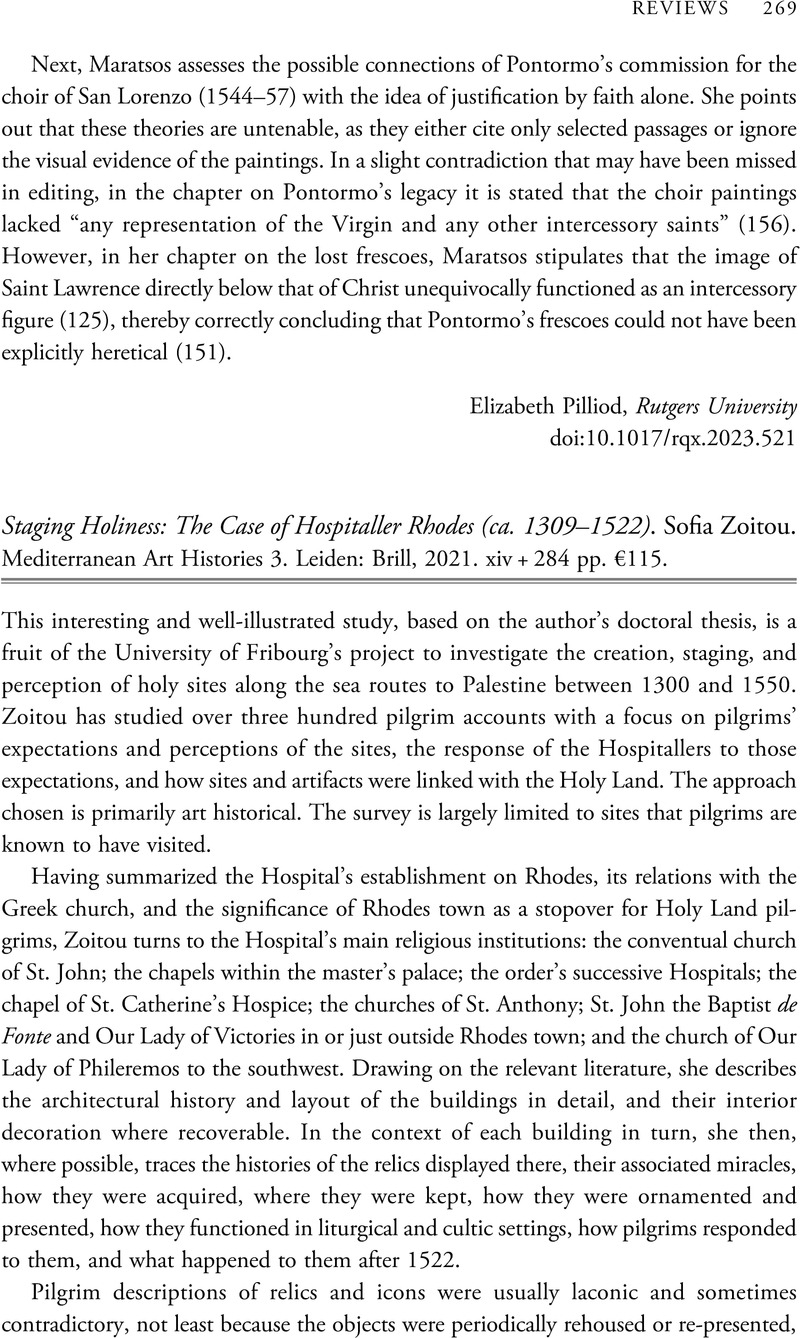No CrossRef data available.
Article contents
Staging Holiness: The Case of Hospitaller Rhodes (ca. 1309–1522). Sofia Zoitou. Mediterranean Art Histories 3. Leiden: Brill, 2021. xiv + 284 pp. €115.
Review products
Staging Holiness: The Case of Hospitaller Rhodes (ca. 1309–1522). Sofia Zoitou. Mediterranean Art Histories 3. Leiden: Brill, 2021. xiv + 284 pp. €115.
Published online by Cambridge University Press: 24 April 2024
Abstract
An abstract is not available for this content so a preview has been provided. Please use the Get access link above for information on how to access this content.

Information
- Type
- Review
- Information
- Copyright
- Copyright © The Author(s), 2024. Published by Cambridge University Press on behalf of The Renaissance Society of America


